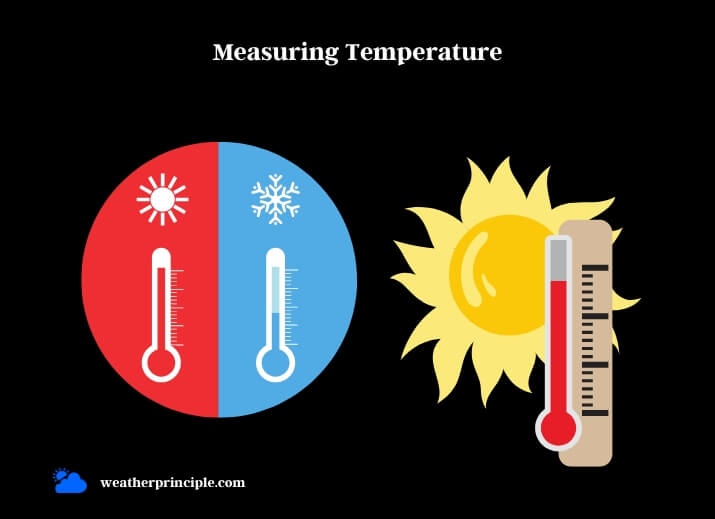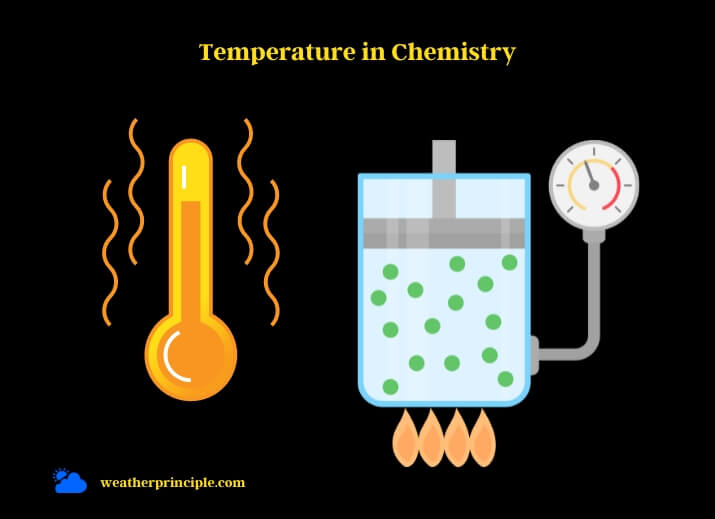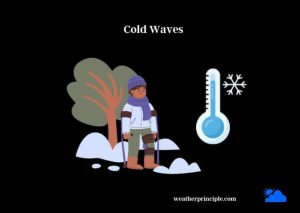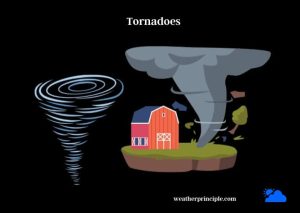Published on: May 13, 2023
Written by Taha Nur / Fact-checked by Kader Khan
Temperature is a fundamental concept that plays a crucial role in our daily lives. It is a measure of the average kinetic energy of the particles in a substance, determining the intensity of heat or cold. Understanding temperature is vital for various applications, from predicting the weather to cooking a delicious meal.
Importance of Temperature in Everyday Life
The significance of temperature spans across countless areas, such as agriculture, health, technology, and many more. Temperature impacts how our bodies function, the growth and reproduction of organisms, and the efficiency of machines, making it an essential factor to consider in numerous fields.
A Brief History of Temperature
Early understanding of temperature
The concept of temperature dates back to ancient times when people used their senses to discern hot and cold. Early Greek philosophers, like Aristotle, attempted to classify and understand the nature of heat, leading to the development of early temperature scales.
Development of temperature scales
Throughout history, scientists have devised various scales to measure temperature. Notable figures like Galileo, Daniel Fahrenheit, and Anders Celsius all contributed to the creation of temperature scales, refining the understanding of this crucial concept.
Pioneers in the field of thermodynamics
Pioneers such as Sadi Carnot, James Clerk Maxwell, and Ludwig Boltzmann contributed significantly to the field of thermodynamics, expanding our understanding of the relationship between heat, work, and energy.
Temperature Scales
Fahrenheit scale
The Fahrenheit scale, created by Daniel Fahrenheit in 1724, is predominantly used in the United States. Water freezes at 32°F and boils at 212°F under standard atmospheric pressure on this scale.
Celsius scale
Anders Celsius developed the Celsius scale in 1742, which is now the most widely used temperature scale worldwide. On this scale, water freezes at 0°C and boils at 100°C under standard atmospheric pressure.

Kelvin scale
Lord Kelvin proposed the Kelvin scale in 1848, which is used primarily in scientific research. This scale starts at absolute zero, the lowest possible temperature (-273.15°C or -459.67°F), where all molecular motion ceases.
Rankine scale
The Rankine scale, established by William Rankine in 1859, is used mainly in thermodynamics and engineering. This scale also starts at absolute zero and uses Fahrenheit degrees, making 0°R equivalent to -459.67°F.
Conversions between temperature scales
Converting between temperature scales is essential for various applications, especially when working with international data. Simple mathematical formulas can be used to convert between Fahrenheit, Celsius, Kelvin, and Rankine scales.
Thermodynamics
Laws of thermodynamics
The laws of thermodynamics govern the behavior of energy in systems, encompassing the concepts of heat, work, and entropy. These laws provide a foundation for understanding energy transfer, efficiency, and the direction of natural processes.
Temperature and energy transfer
Temperature is a driving force for energy transfer between substances. When objects with different temperatures come into contact, heat flows from the warmer object to the cooler one until they reach thermal equilibrium.

Entropy and temperature
Entropy is a measure of disorder in a system. The second law of thermodynamics states that, in any spontaneous process, the total entropy of a closed system always increases.
Temperature and phase transitions
Temperature plays a critical role in phase transitions, such as melting, freezing, boiling, and condensation. These transitions occur when a substance reaches specific temperatures, causing changes in its state of matter.
Measuring Temperature
Traditional thermometers
Traditional thermometers, such as mercury and alcohol thermometers, rely on the expansion of liquids in response to temperature changes. These devices are simple and affordable, making them a popular choice for various applications.
Infrared thermometers
Infrared thermometers measure temperature by detecting the infrared radiation emitted by an object. These devices are non-contact and offer rapid readings, making them suitable for applications where traditional thermometers are impractical.
Digital temperature sensors
Digital temperature sensors convert temperature-related physical changes into electrical signals, which are then processed by microcontrollers. These sensors are accurate, reliable, and can be integrated into various electronic devices.

Advanced temperature measurement techniques
Advanced techniques, such as thermocouples, resistance temperature detectors (RTDs), and thermistors, offer increased precision and accuracy in temperature measurement. These methods are commonly used in scientific research and industrial applications.
Temperature in Chemistry
Role of temperature in chemical reactions
Temperature influences the rates and outcomes of chemical reactions. Higher temperatures typically increase reaction rates by providing more energy to reactant molecules, enabling them to overcome activation energy barriers.

Reaction rates and temperature
The relationship between temperature and reaction rates can be described by the Arrhenius equation, which shows that reaction rates increase exponentially with rising temperature.
Temperature and phase transitions
Temperature dictates the state of matter for a given substance. Phase transitions, such as melting, freezing, boiling, and condensation, occur when substances reach specific temperatures, altering their physical states.
Temperature in Physics
Thermal expansion and contraction
Temperature affects the dimensions of materials through thermal expansion and contraction. As temperature increases, materials typically expand, while they contract when the temperature decreases. This behavior is essential in engineering and construction.
Temperature and states of matter
The state of matter (solid, liquid, or gas) for a substance is determined by its temperature and pressure. Temperature influences the kinetic energy of particles, which in turn affects their organization and state of matter.

Absolute zero and superconductivity
Absolute zero (-273.15°C or -459.67°F) is the lowest possible temperature, where all molecular motion ceases. At extremely low temperatures, certain materials exhibit superconductivity, a state with zero electrical resistance, which has significant implications for technology and research.
Temperature in Biology
Human body temperature
The human body maintains an average temperature of 98.6°F (37°C), which is essential for proper physiological function. Deviations from this range can lead to health complications, such as hypothermia or hyperthermia.
Temperature adaptation in animals
Animals have developed various adaptations to cope with temperature extremes, including behavioral, morphological, and physiological strategies. These adaptations enable species to thrive in environments ranging from scorching deserts to frigid polar regions.

Temperature’s influence on plant growth
Temperature affects plant growth, development, and reproduction. Plants have specific temperature requirements for processes like germination, photosynthesis, and flowering, which determine their geographical distribution and seasonal behavior.
Climate and Temperature
Temperature and weather patterns
Temperature is a critical factor in determining weather patterns, as it influences air pressure, humidity, and wind. Differences in temperature drive the circulation of air masses, creating diverse weather phenomena like storms, cyclones, and fronts.
Earth’s temperature history
Earth’s temperature has fluctuated throughout its history due to factors like solar radiation, volcanic activity, and plate tectonics. Periods of global warming and cooling, such as the ice ages, have shaped the planet’s climate and the evolution of life.
Climate change and global warming
Human activities, such as the burning of fossil fuels and deforestation, have increased greenhouse gas concentrations in the atmosphere, leading to global warming. Rising temperatures have far-reaching consequences, including more frequent extreme weather events, sea-level rise, and loss of biodiversity.
Temperature in Technology
Temperature control in manufacturing
Temperature control is vital in manufacturing processes to ensure product quality, safety, and efficiency. Industries such as food processing, pharmaceuticals, and metallurgy rely on precise temperature management to produce consistent and reliable results.
Refrigeration and air conditioning
Refrigeration and air conditioning systems manipulate temperature to preserve perishable goods, maintain comfortable indoor environments, and enable industrial processes. These systems rely on the principles of thermodynamics to transfer heat from one location to another.
Thermal management in electronics
Effective thermal management is crucial in electronic devices to ensure optimal performance and prevent overheating. Techniques such as heat sinks, fans, and liquid cooling systems are employed to dissipate heat generated by electronic components.
Temperature in Astronomy
Stellar temperatures
Stellar temperatures vary widely, with the surface temperature of stars ranging from a few thousand to tens of thousands of kelvins. A star’s temperature influences its color, brightness, and spectral classification.
Temperature of cosmic microwave background radiation
The cosmic microwave background (CMB) radiation is a remnant of the early universe, with an almost uniform temperature of about 2.7 kelvins. The study of CMB temperature fluctuations provides insights into the formation and evolution of the universe.
Planetary temperature variations
Planetary temperatures are influenced by factors such as distance from the parent star, atmospheric composition, and internal heat sources. These variations create diverse environments, from scorching hot surfaces to frigid ice-covered worlds.
Extreme Temperatures
Hottest places on Earth
Some of the hottest places on Earth include the Lut Desert in Iran, Death Valley in the United States, and Dallol in Ethiopia. These locations experience extreme heat due to a combination of factors, such as solar radiation, low humidity, and geographical features.
Coldest places on Earth
The coldest places on Earth are found in polar regions, with record low temperatures recorded at the Vostok Station in Antarctica and the remote Siberian village of Oymyakon in Russia. These locations experience frigid temperatures due to their high latitudes and unique atmospheric conditions.
Man-made temperature extremes
Scientific experiments and industrial processes can generate extreme temperatures, ranging from near-absolute zero in cryogenic research to millions of kelvins in nuclear fusion experiments. These controlled environments enable the study of matter and energy under extreme conditions.
Temperature Safety and Precautions
Heat-related illnesses
Exposure to high temperatures can lead to heat-related illnesses, such as heat exhaustion, heatstroke, and dehydration. Preventive measures include staying hydrated, wearing appropriate clothing, and taking breaks in cool environments.
Cold-related illnesses
Prolonged exposure to cold temperatures can result in cold-related illnesses, such as frostbite, hypothermia, and trench foot. To prevent these conditions, it’s essential to dress in layers, limit exposure to cold, and stay dry.
Temperature safety in the workplace
Temperature safety in the workplace is crucial for maintaining employee health and productivity. Employers should implement temperature control measures, provide protective equipment, and educate workers on the risks associated with extreme temperatures.
Summary
Temperature is a fundamental concept that influences various aspects of our lives, from the functioning of our bodies to the behavior of matter in the universe. Understanding temperature is vital for numerous applications, including health, agriculture, technology, and climate science. By delving into the intricacies of heat and cold, we can better appreciate the profound impact temperature has on our world.
Frequently Asked Questions (FAQs)
Why are there different temperature scales?
Different temperature scales were developed throughout history to suit various purposes and regional preferences. Today, the Celsius, Fahrenheit, and Kelvin scales are the most commonly used temperature scales worldwide.
What is the difference between heat and temperature?
Heat is a form of energy transfer that occurs between substances with different temperatures, while temperature is a measure of the average kinetic energy of the particles in a substance. In essence, heat is energy in transit, and temperature is a property of matter.
How do animals adapt to extreme temperatures?
Animals have evolved various adaptations to cope with extreme temperatures, including behavioral, morphological, and physiological strategies. These adaptations enable species to survive and thrive in environments ranging from scorching deserts to frigid polar regions.
What are the effects of temperature on the human body?
Temperature impacts the human body’s physiological functions, such as metabolism, heart rate, and respiration. Deviations from the average body temperature of 98.6°F (37°C) can lead to health complications, such as hypothermia or hyperthermia.
How does temperature affect climate change?
Temperature plays a significant role in climate change, as rising global temperatures due to increased greenhouse gas concentrations have far-reaching consequences. These include more frequent extreme weather events, sea-level rise, and loss of biodiversity.
Relevant Resources:



